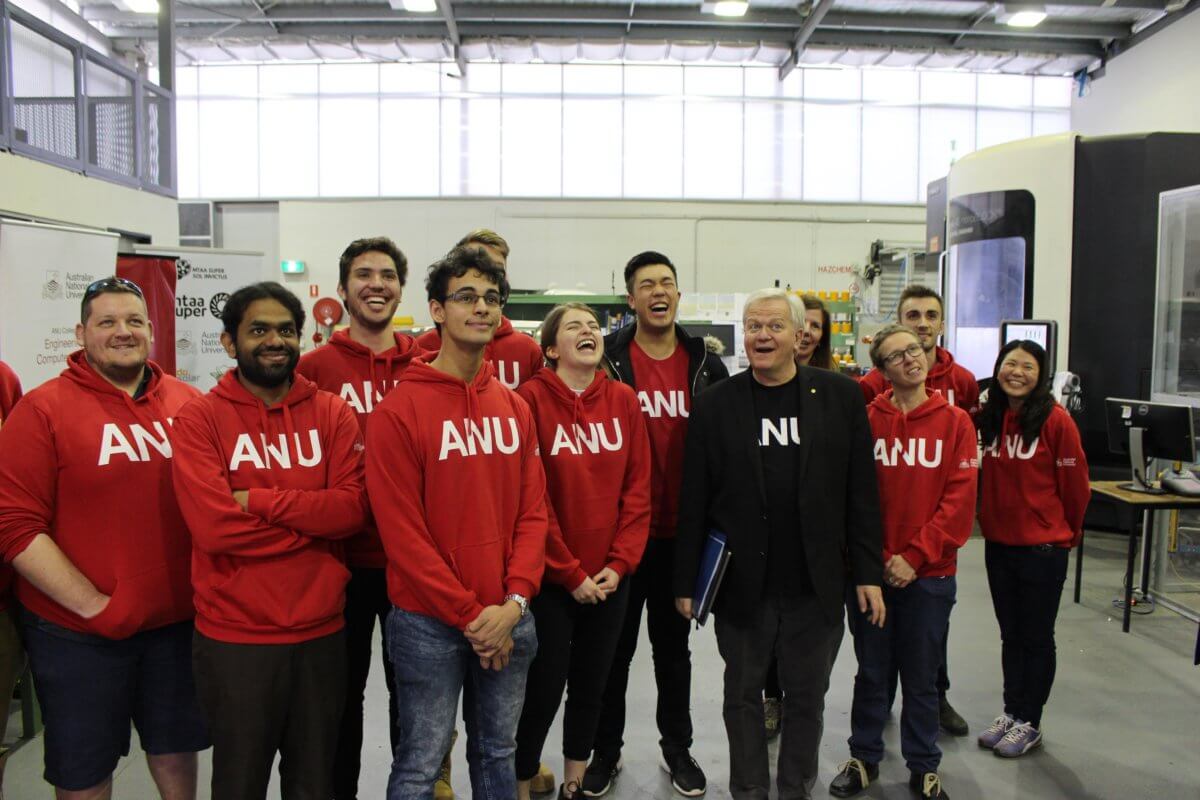From the very first automobile to cruise down the streets of Germany in 1879 to the little Hyundai Getz your parents bought you for your Sweet Sixteenth, society has long been dependent on a finite and increasingly scarce resource to power our transport. With the world’s fossil fuels predicted to only last another 70 years, finding alternative energy sources is imperative. It is the young scientists and engineers of today that are tasked with the challenge of developing feasible technologies to satisfy our increasing energy demands, so that when the time does come, our society is not plunged back into the Dark Ages.
Students at the ANU are joining the effort to develop renewable technologies to power the transport of the future. Team Sol Invictus – comprised of over 30 students from diverse backgrounds in varying fields of study – is one of many university teams worldwide focused on designing and building solar cars for the Bridgestone World Solar Challenge. This race, spanning over 3000km from Darwin to Adelaide, encourages bright and innovative young minds to perfect the application of solar technology and reinvent the way we consider transport. The competition includes two classes:
- The ‘Challenger Class’: One-seat aerodynamic vehicles are judged for their endurance and efficiency.
- The ‘Cruiser Class’: Practical and sustainable cars are evaluated for their commercial appeal, in hope of them becoming the first generation of market solar cars.
ANU’s Sol Invictus competed in their first Challenger Class race in 2017, with the ‘Sol Invictus Supercharge’. They are now in the process of designing a new and improved vehicle for the upcoming race in 2019.
So, what goes into designing and building a solar car? What are the challenges? When will we be able to see practical, affordable and sustainable solar cars on the market?
Building a Solar Car
When building a solar car, the main factors which contribute to design decisions are power efficiency, aerodynamics, weight and reliability.
The car must be able to: access enough power from the sun to drive at highway speeds, be as aerodynamic as possible to minimise drag, be as light as possible to maximise acceleration and reduce rolling resistance and stay in one piece during six days of driving across the continent. So, how do we achieve this?
Power
The top of the car is covered in 4m^2 of monocrystalline silicon solar cells, which rely on the photoelectric effect to convert the energy of incoming photons from the sun to electrical energy by the generation of a current. This process is highly inefficient, with only 24% of the total incoming energy providing power to the car. On average, the solar cells produce 900W of power – 300W less than the average toaster!
Aerodynamics
With such a finite amount of available power, it is crucial that the vehicle is designed to be as aerodynamic as possible, to minimise energy lost by air resistance. To achieve this, the frontal area of the car – which makes impact with incoming air as the car drives – is reduced and the shape of the car body is designed to mimic that of a teardrop.
Weight
The heavier the car, the more energy that is lost to inertia and rolling resistance. For this reason, the chassis and outer shell of most solar vehicles are built out of superlight composite materials, such as carbon fibre. The effect of this is significant – the average commercial car weighs two tonnes, while the standard solar vehicle weighs between 150-300kg. In perspective, that’s the combined mass of two to four adult humans!
Reliability
Even with over a years’ worth of planning, designing and building, things still go wrong. Our 2017 Supercharge once set itself on fire. UNSW’s Cruiser car pulled out of the race due to faulty suspension. The car from the University of Cambridge crashed before the race had even begun. These risks are inevitable for such a project, but the best way to minimise them is rigorous testing of every step of the design and building stages – lest 12 months of hard work result in an unfinished race!
Current Challenges and the Future of Solar Cars
We are currently still a far way from being able to harvest the sun’s energy to power our commercial transport. While the technology developed for the solar car competition is impressive, the conditions of the race are ideal – it runs on mainly a straight road through one of the sunniest locations in the world. The obvious challenges still exist: the car cannot drive all through the night, it cannot reach full drive potential if the weather is cloudy or rainy, and the car cannot drive safely on uneven terrain. The list of feasibility complications stretches much further, however, several potential solutions are being explored, such as developing solar cells with increased energy efficiency and batteries with greater capacity for storage.
Although you may not find commercial solar cars with ‘My Family’ stickers cruising the streets of Canberra in the next couple of years, it is critical for society’s future that we keep pushing towards a renewable and sustainable future. Maybe one day, our work at Sol Invictus and the work of dozens of other teams worldwide will contribute towards making solar cars a feasible, sustainable and affordable option for communities everywhere. Until then, we look forward to continuing designing and improving our technological masterpieces to race on the world stage!
Follow us to see our progress towards the 2019 Bridgestone World Solar Challenge!
FB: MTAA Super Sol Invictus
Insta: anu_sol_invictus_solar_car
We acknowledge the Ngunnawal and Ngambri people, who are the Traditional Custodians of the land on which Woroni, Woroni Radio and Woroni TV are created, edited, published, printed and distributed. We pay our respects to Elders past and present. We acknowledge that the name Woroni was taken from the Wadi Wadi Nation without permission, and we are striving to do better for future reconciliation.
